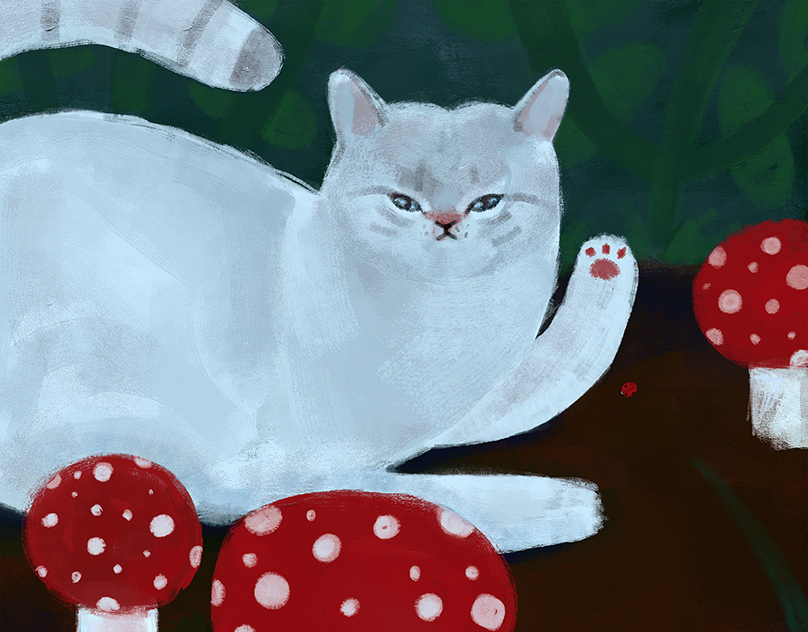L A B I E N N A L E D I V E N E Z I A 2 0 1 6
–––––––
T H E B A L T I C P A V I L I O N
–––––––
T H E B A L T I C P A V I L I O N
The Baltic Pavilion
(Estonia, Latvia and Lithuania)
(Estonia, Latvia and Lithuania)
Curators:
Kārlis Bērziņš – Jurga Daubaraitė – Petras Išora – Ona Lozuraitytė
Niklāvs Paegle – Dagnija Smilga – Johan Tali – Laila Zariņa – Jonas Žukauskas
Contributors:
Muriz Djurdjevic & Thomas Paturet
Contributors:
Muriz Djurdjevic & Thomas Paturet
––––––
There are transformative efforts at play which are reprogramming an inert region beyond the delineations of separate nation-states. The Baltic Pavilion intends to explore the built environment of the Baltic States as a shared space of ideas. This exhibition and a series of related events presents a cross-section of Baltic space. In light of the Anthropocene, a new geological epoch, the developments in this region will unfold as a non-linear stratigraphy.
There are transformative efforts at play which are reprogramming an inert region beyond the delineations of separate nation-states. The Baltic Pavilion intends to explore the built environment of the Baltic States as a shared space of ideas. This exhibition and a series of related events presents a cross-section of Baltic space. In light of the Anthropocene, a new geological epoch, the developments in this region will unfold as a non-linear stratigraphy.
Recent geopolitical developments around the Baltic States have created a sense of urgency for new spatial practices to be initiated, that both unite the region and underpin the foundations of the European Union. New infrastructural connections in the Baltic Sea, FSRU Independence, the natural gas storage ship in Klaipėda, and the pan-Baltic railway project Rail Baltica are among the many examples of this new kind of architecture.
The Baltic Pavilion attempts to unravel the conventions and instruments operated by a wide range of spatial practices, industries, and infrastructures that are actively trans-forming the built space of the three Baltic States, and the wider region. Without making distinction between abstract ideas and their material projections, the exhibition seeks to distill parameters and thought structures, to enable the formulation of a range of spatial interventions which aim to reconfigure the inert built environment of the Baltics.
––––––
E X H I B I T I O N
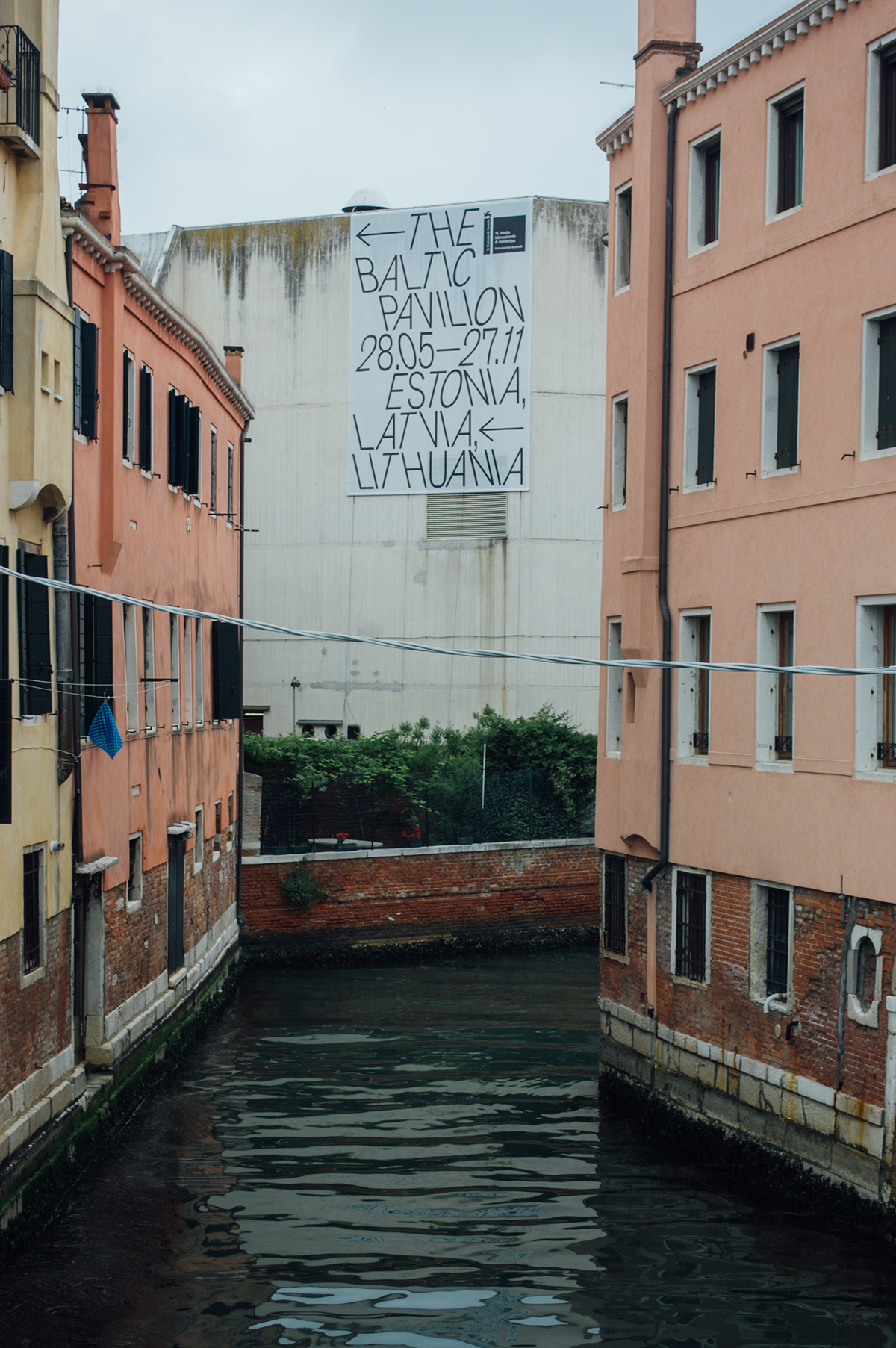
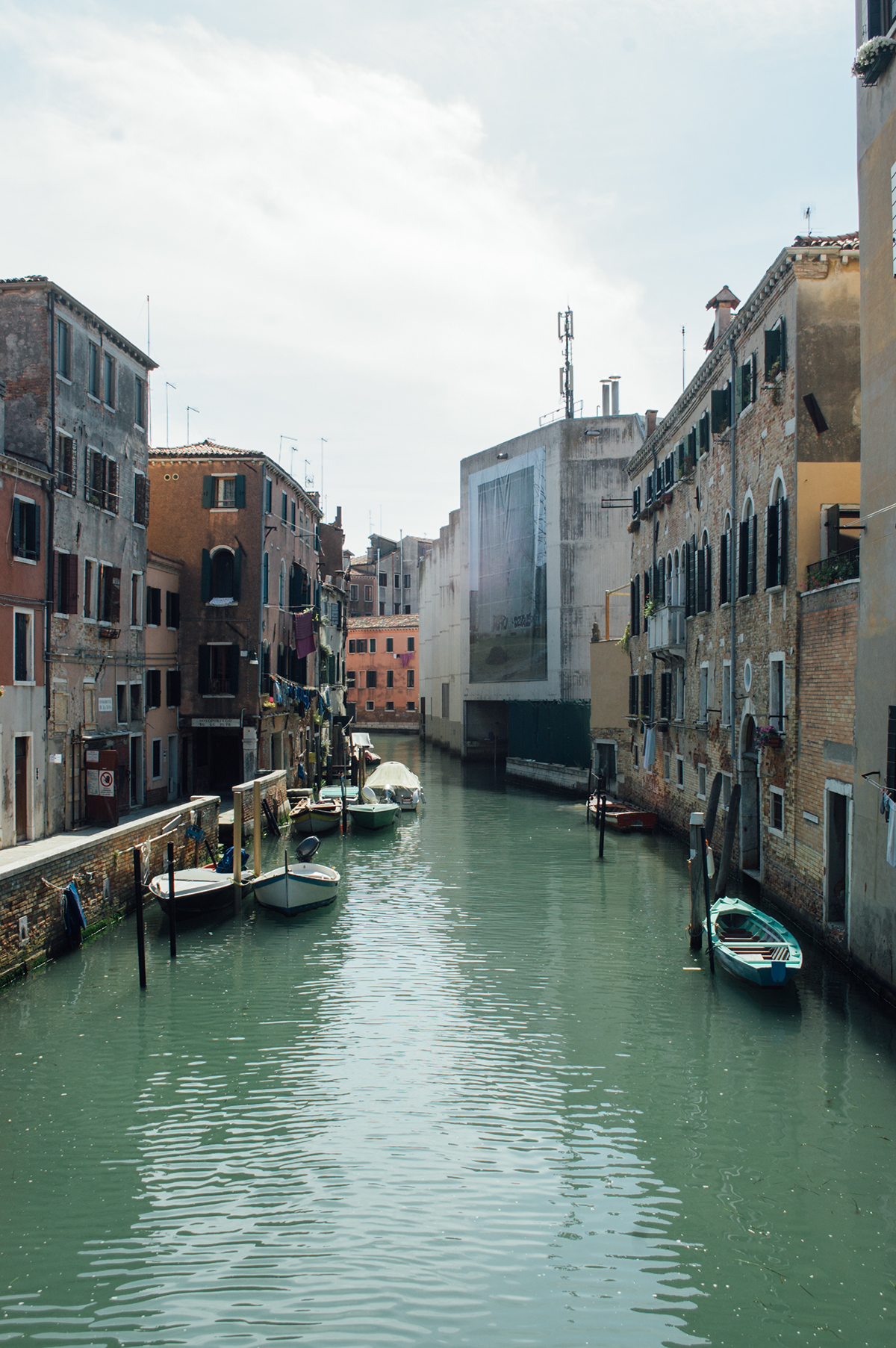
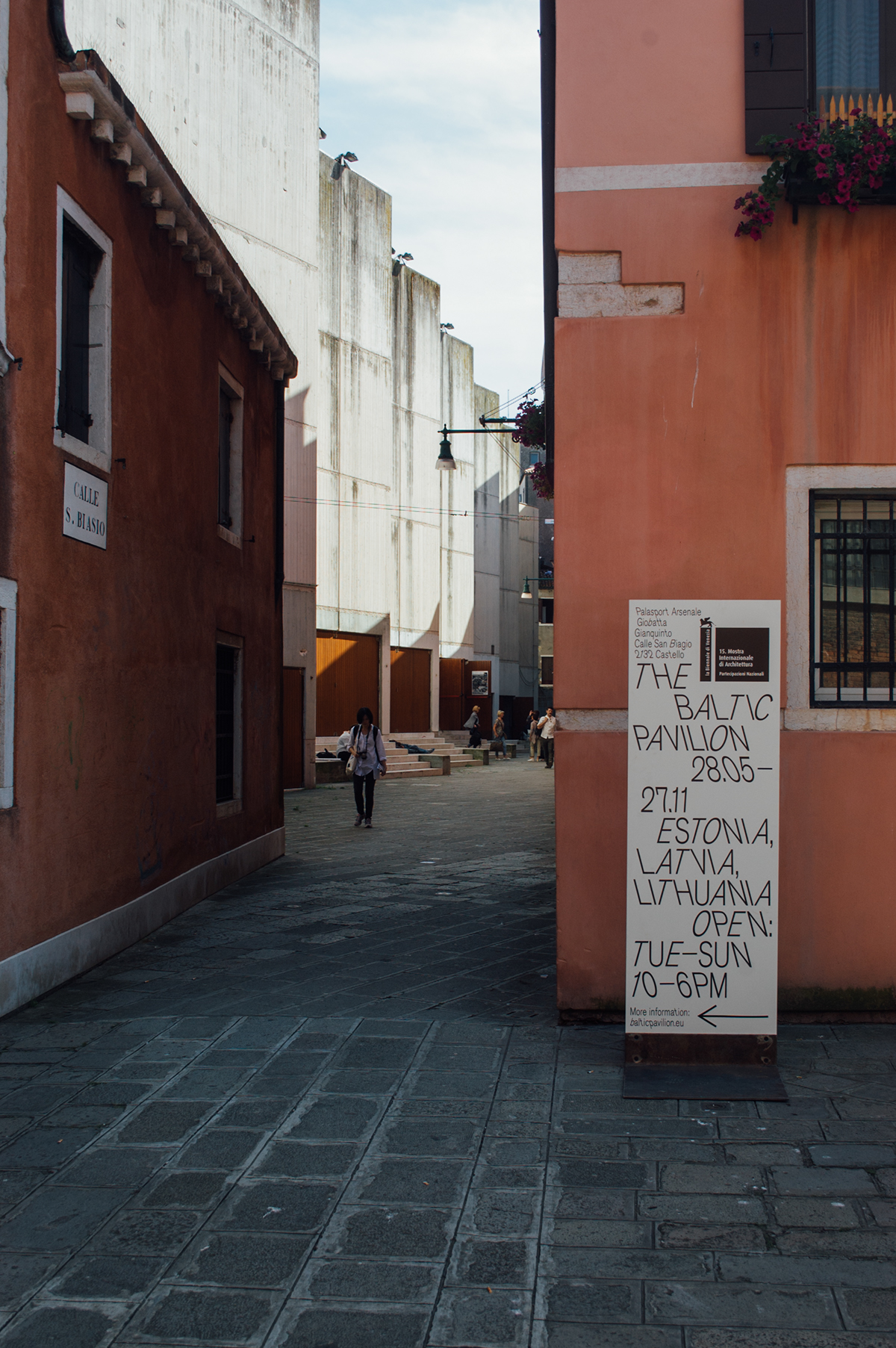
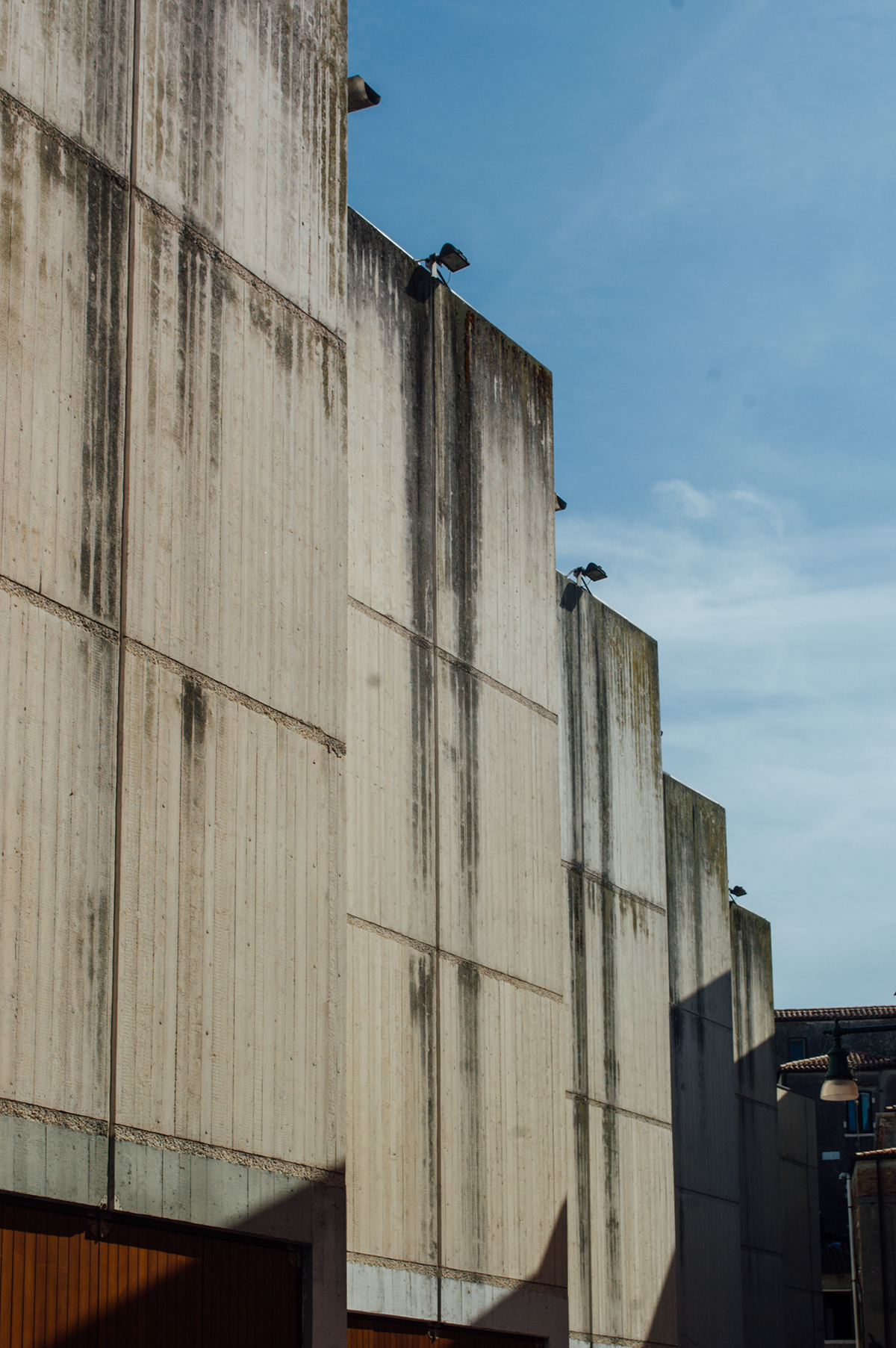
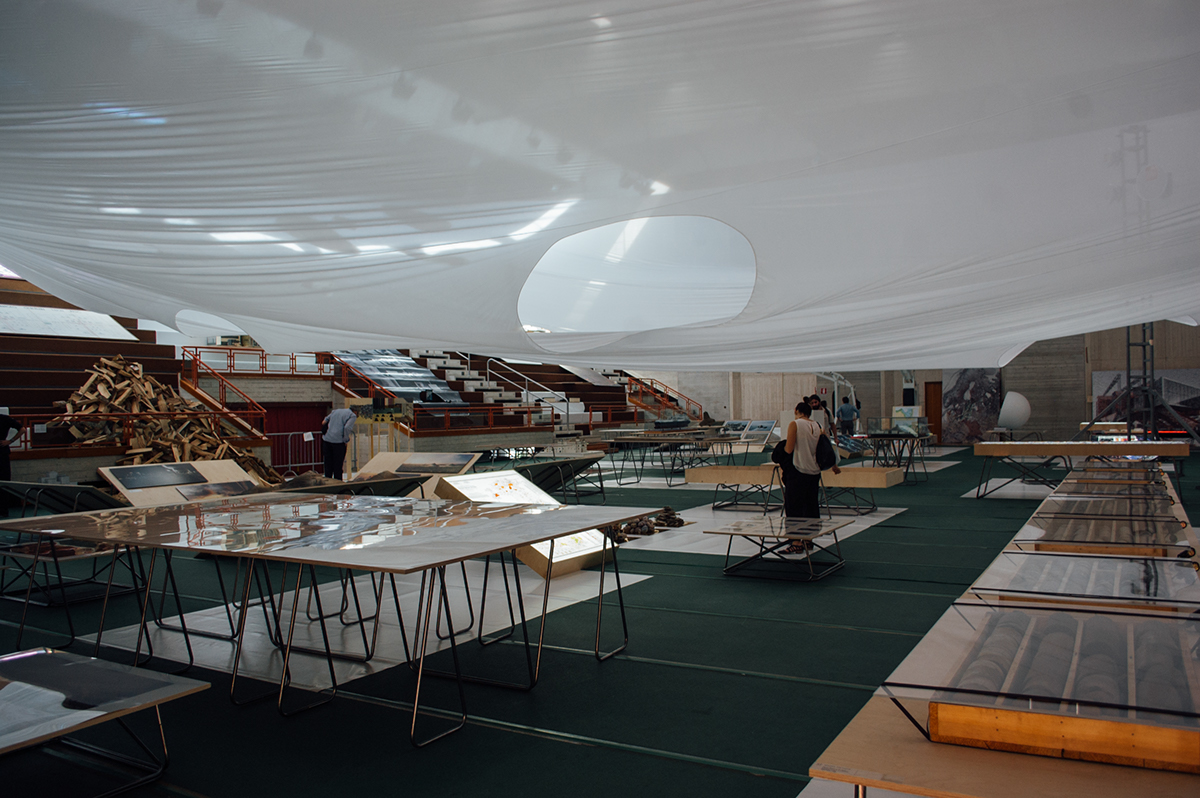
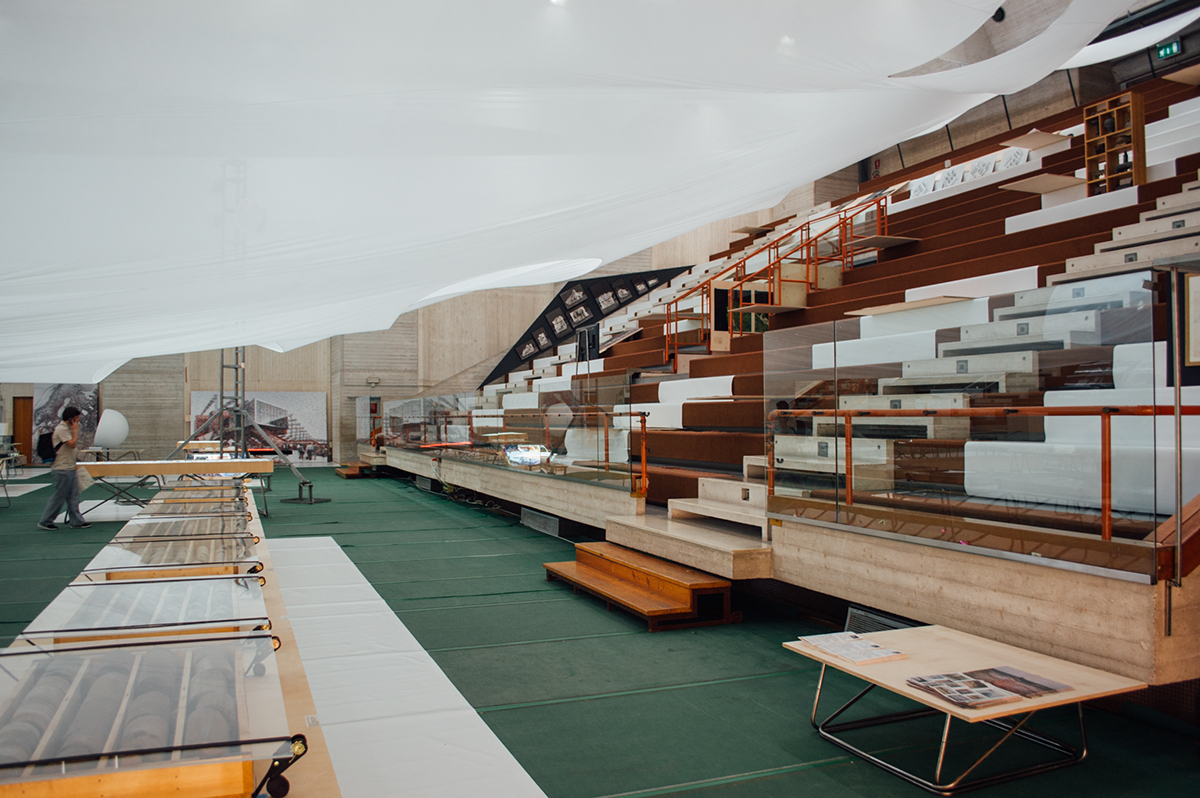
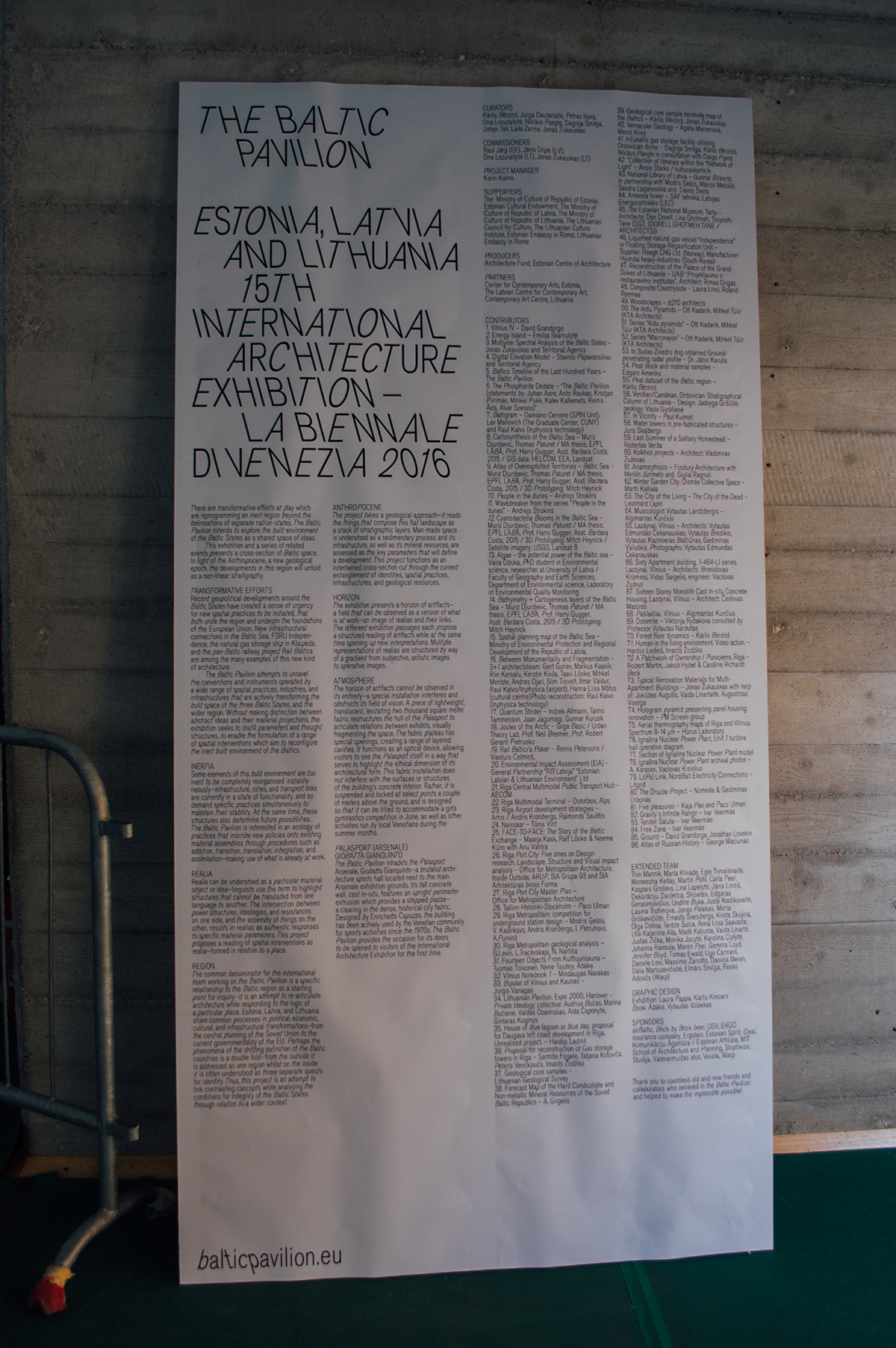
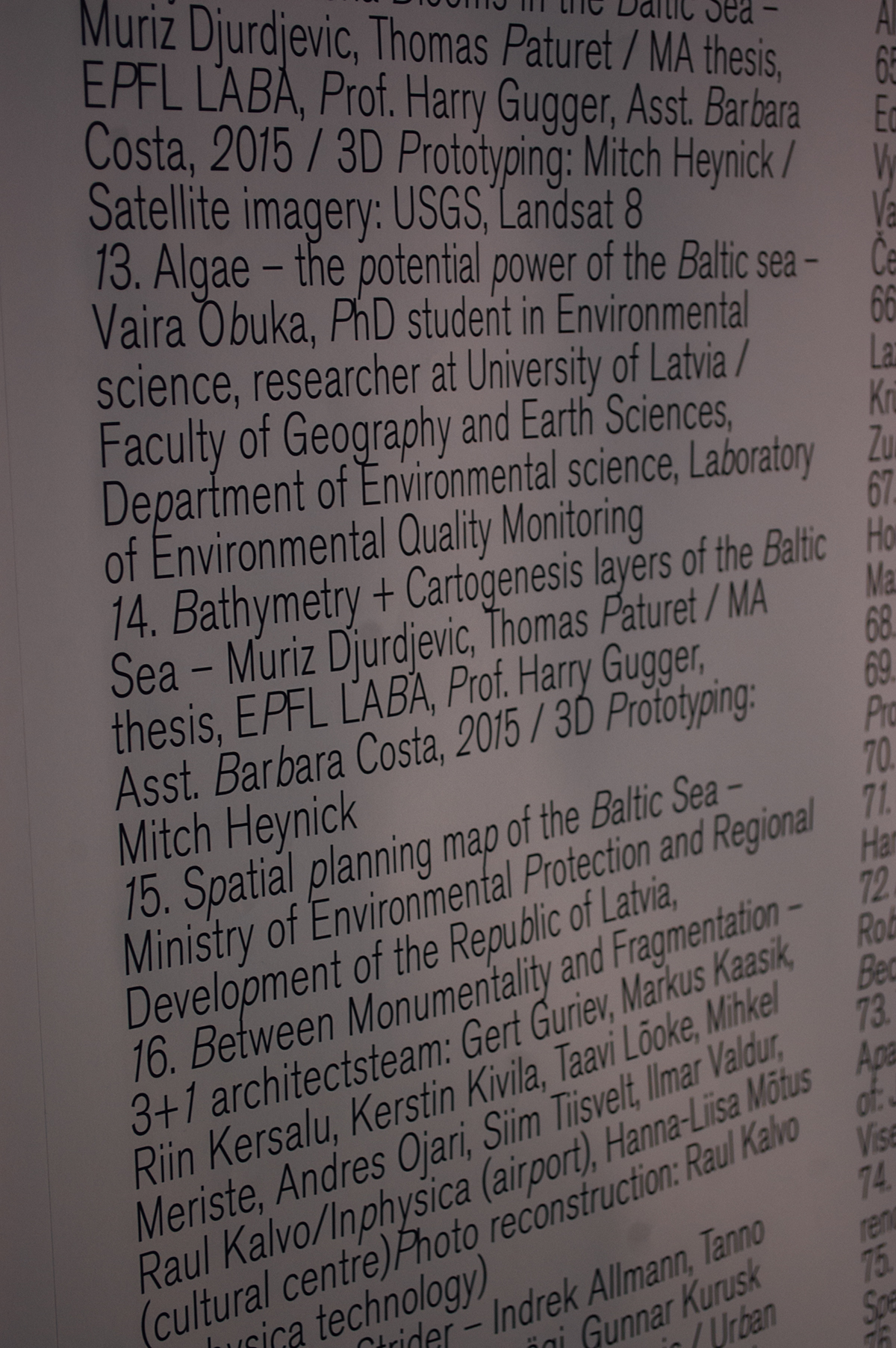
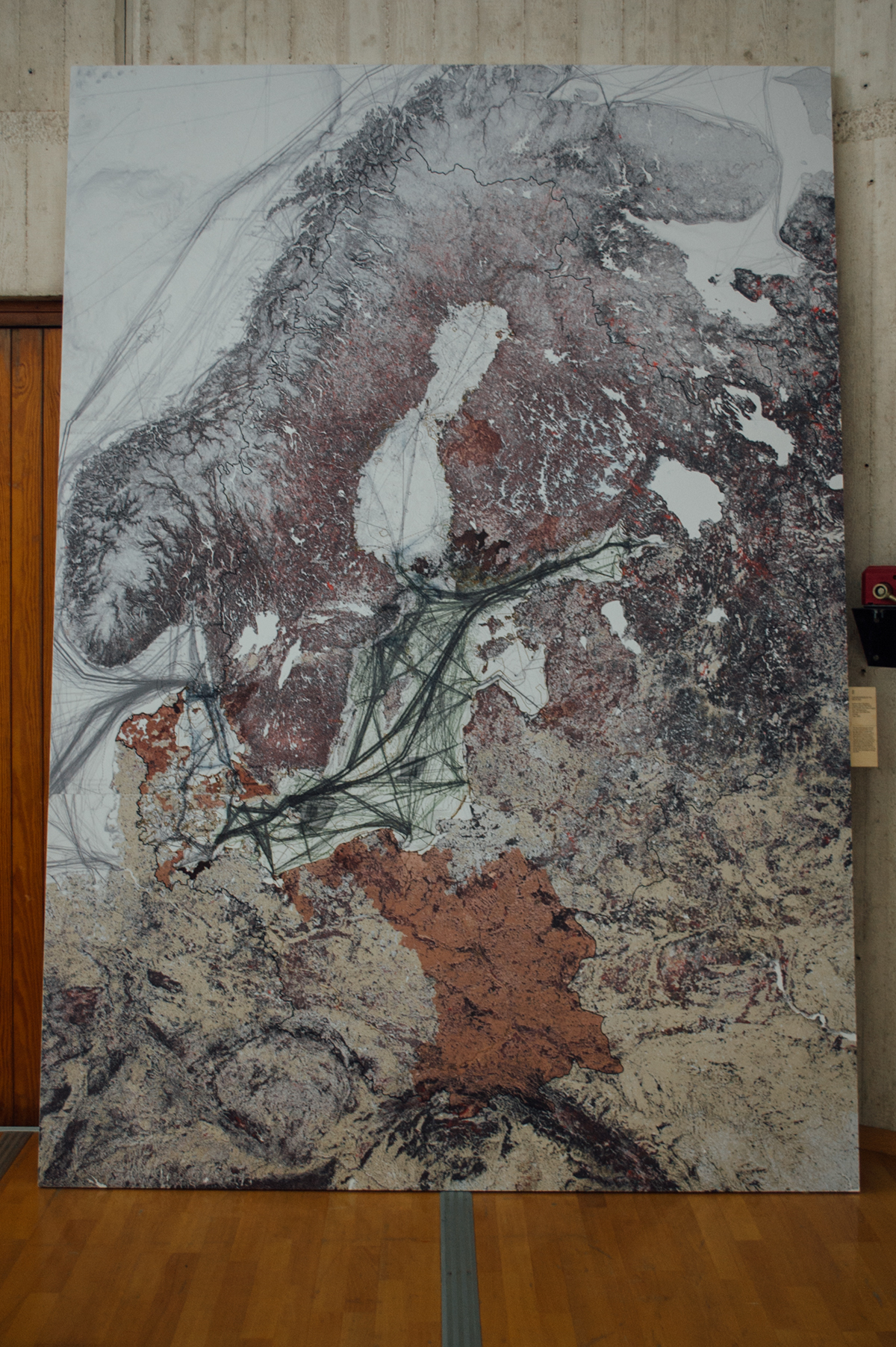
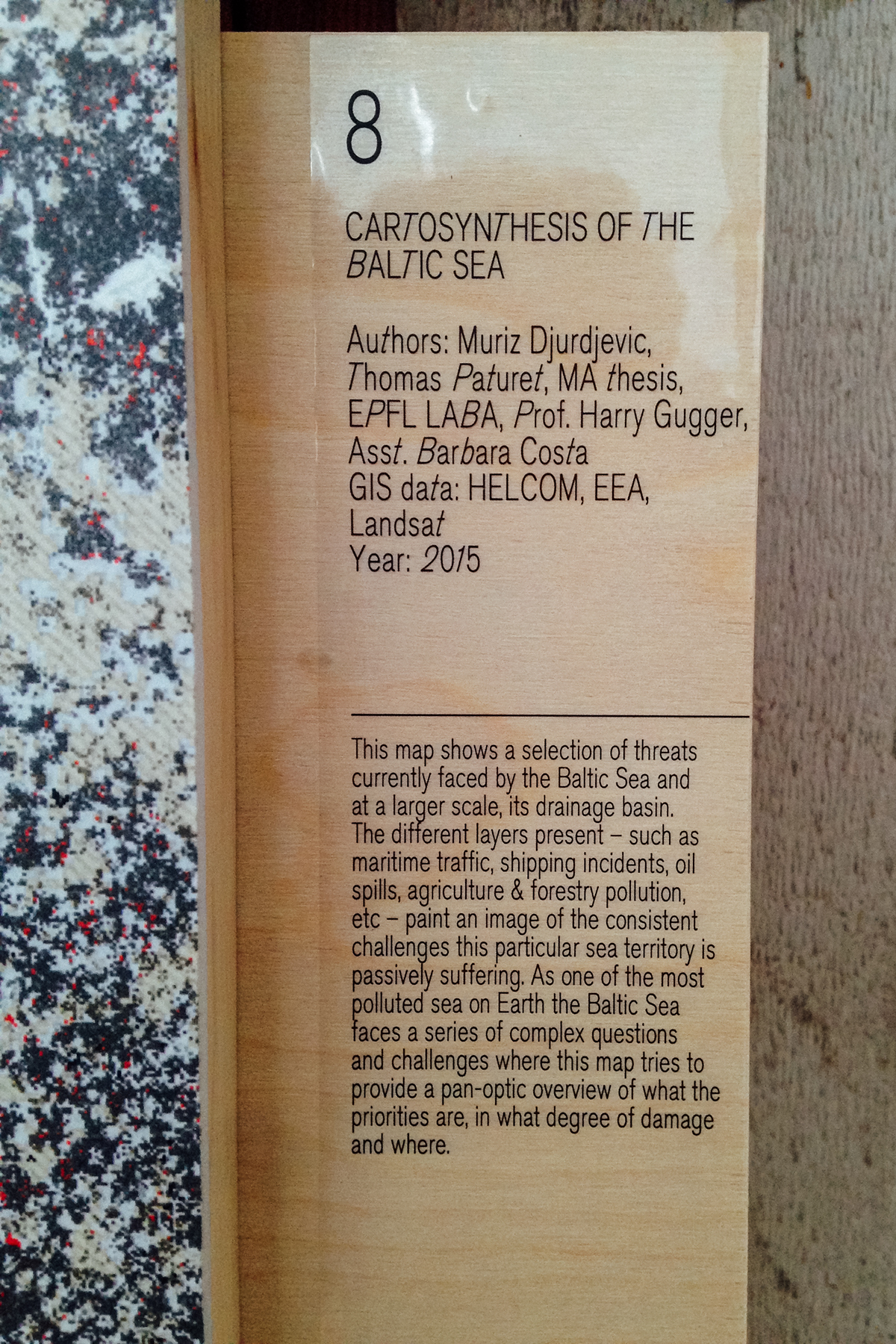
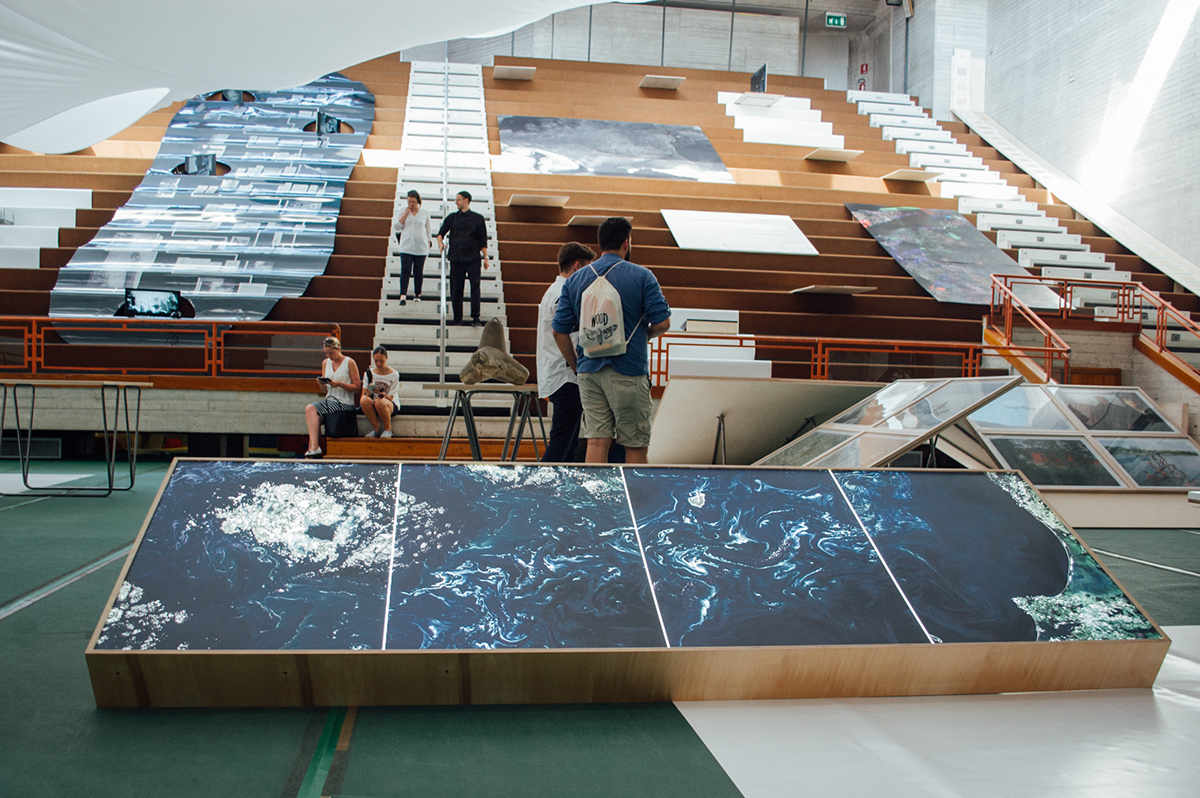
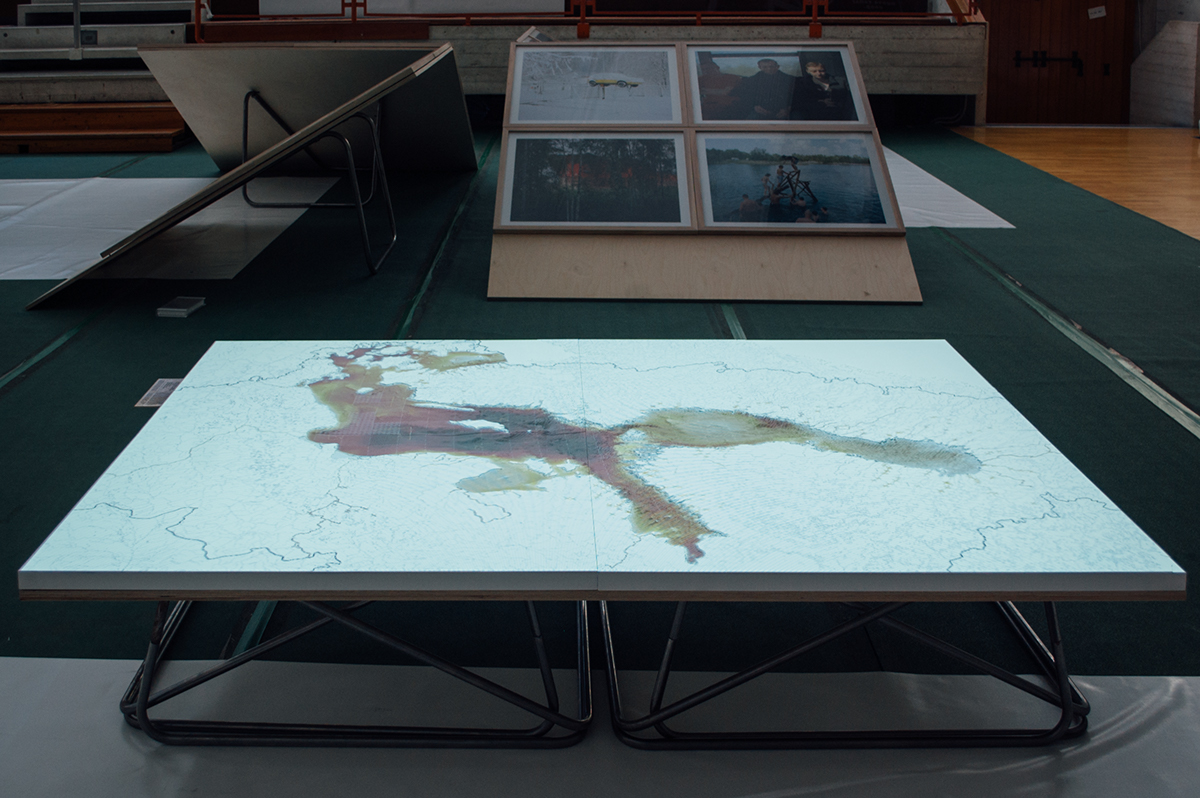
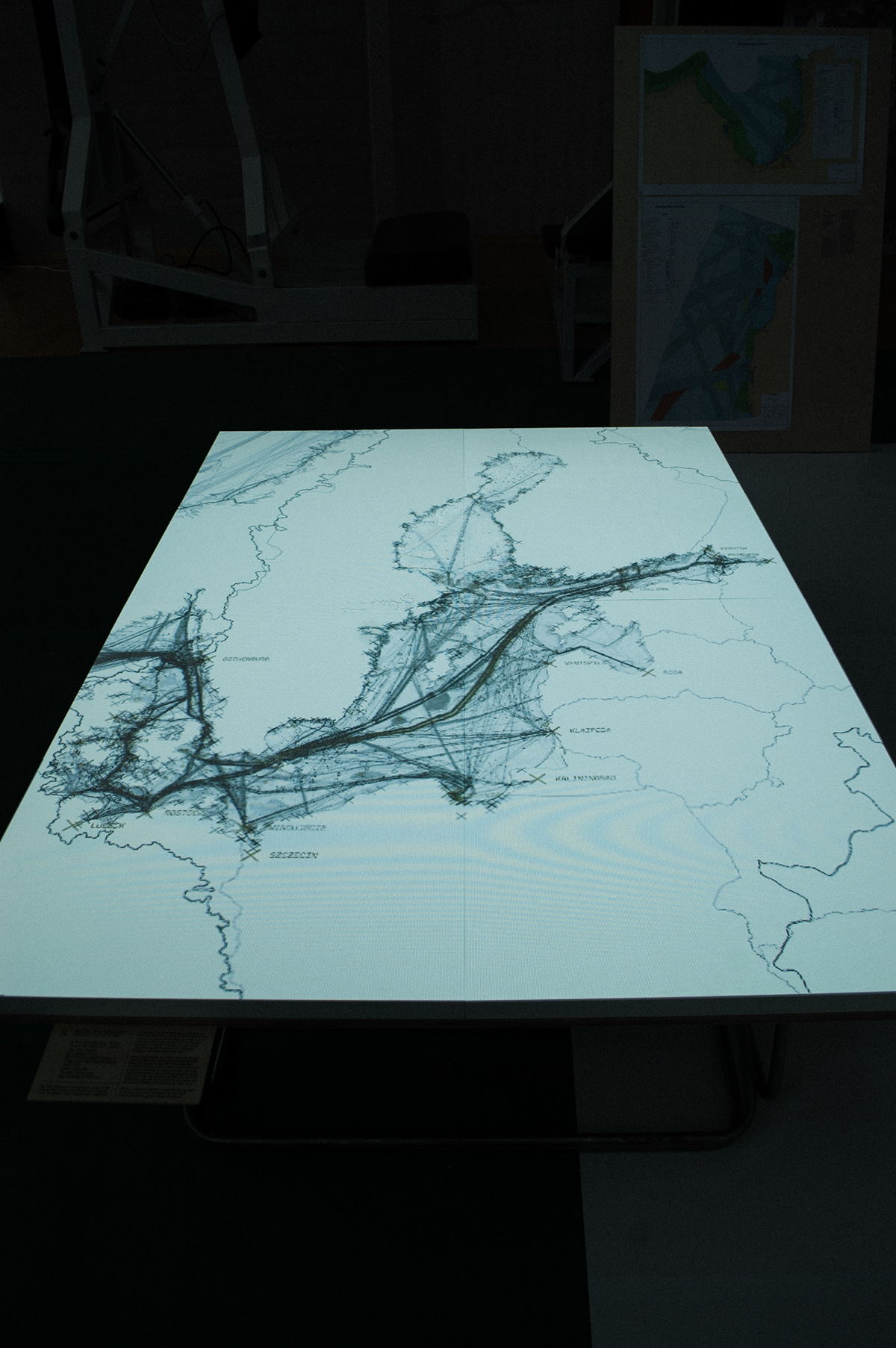
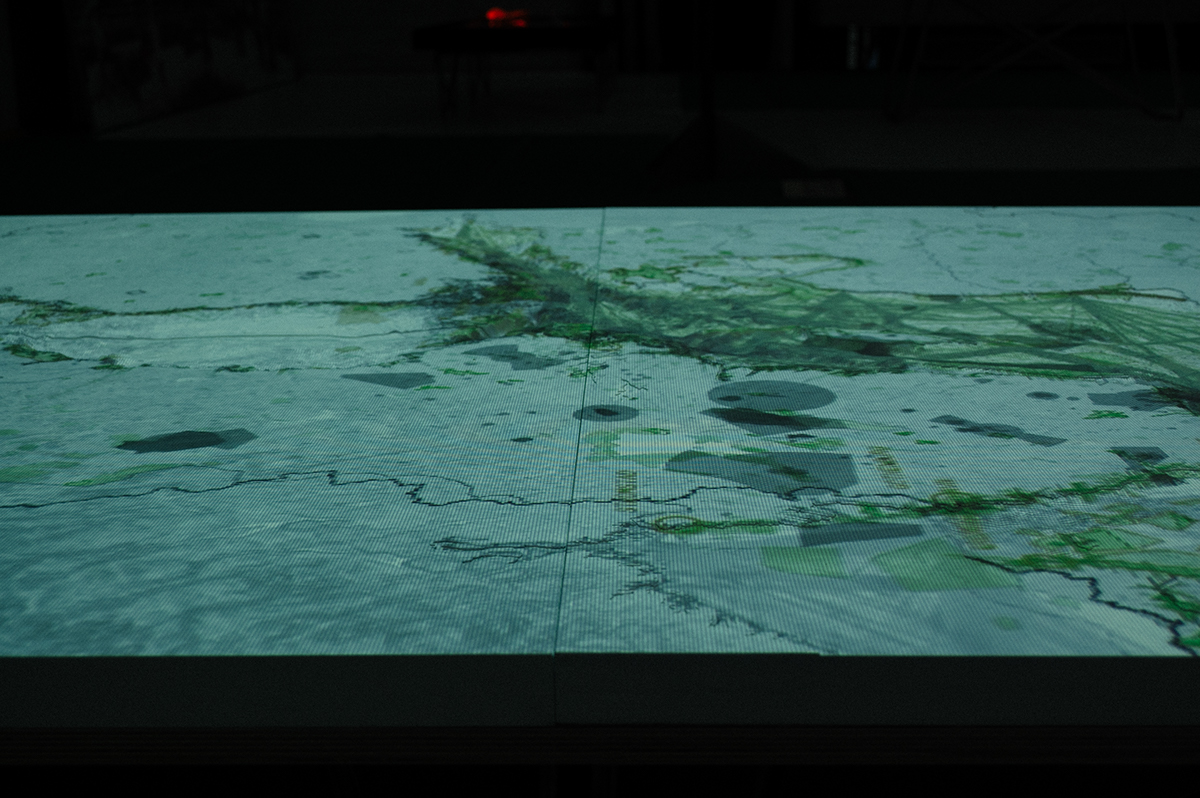
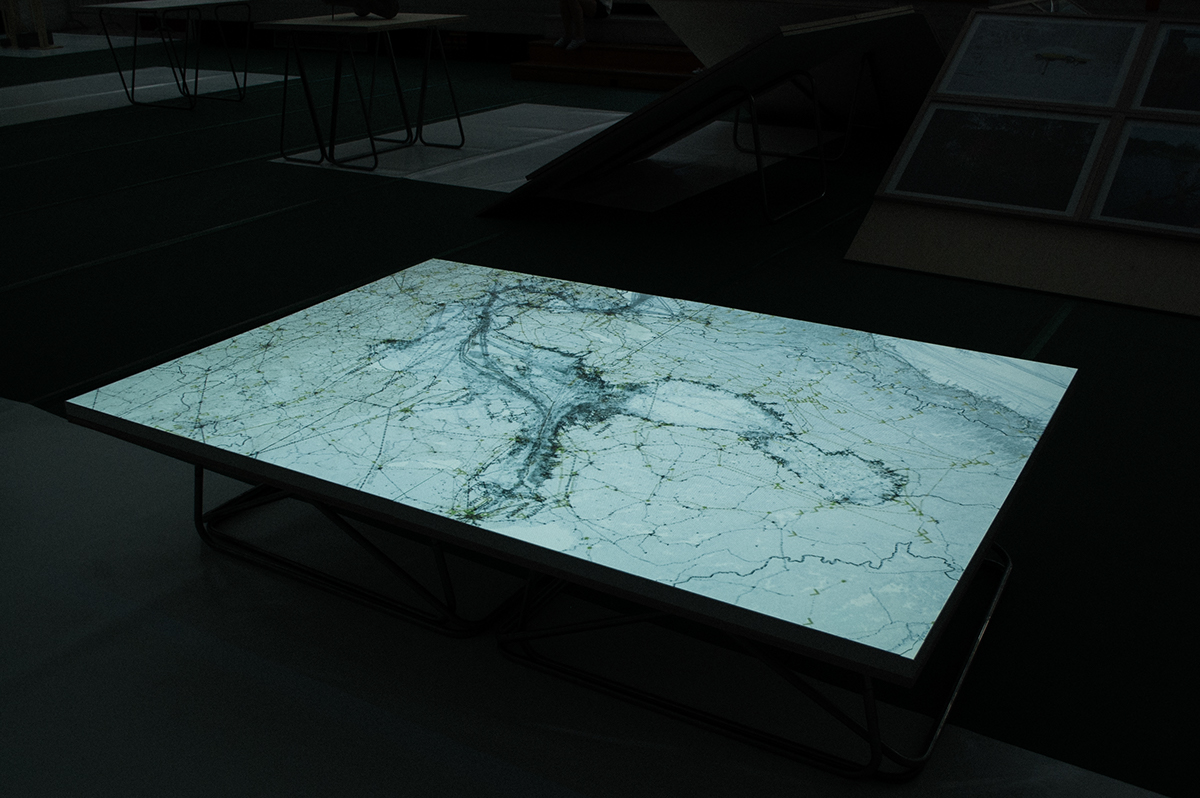
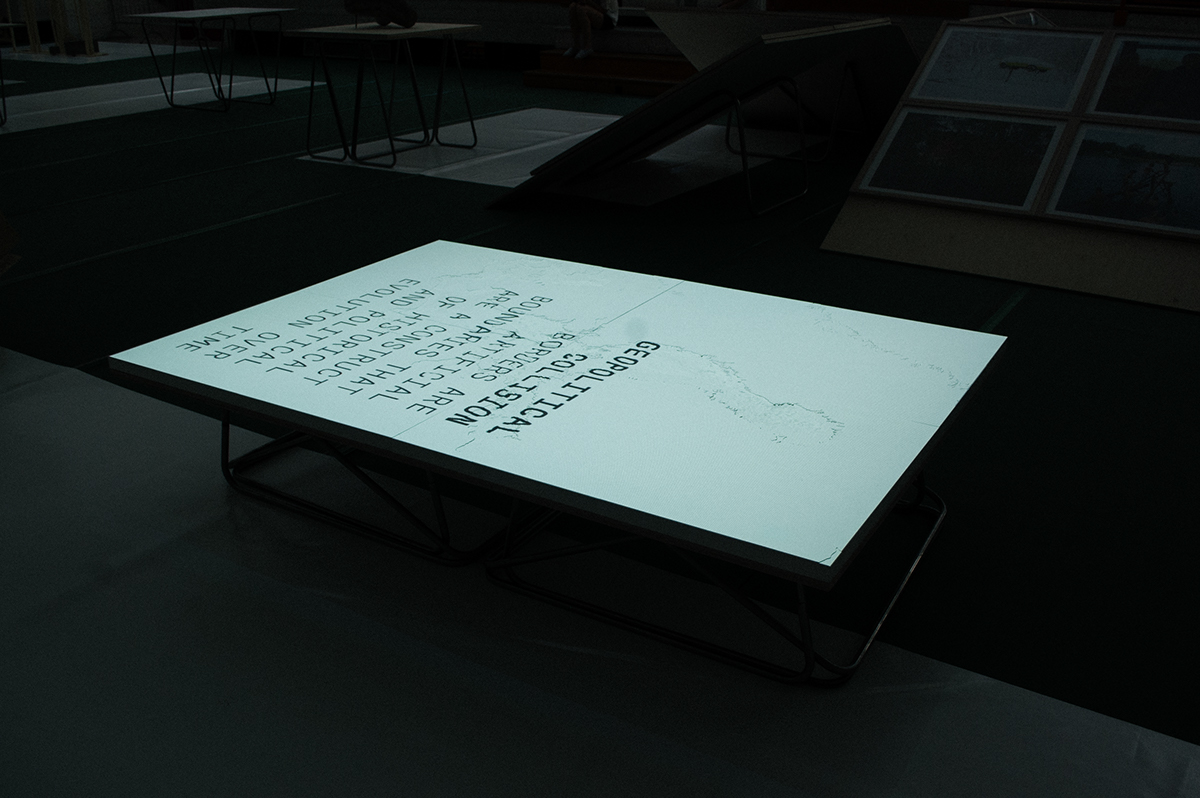
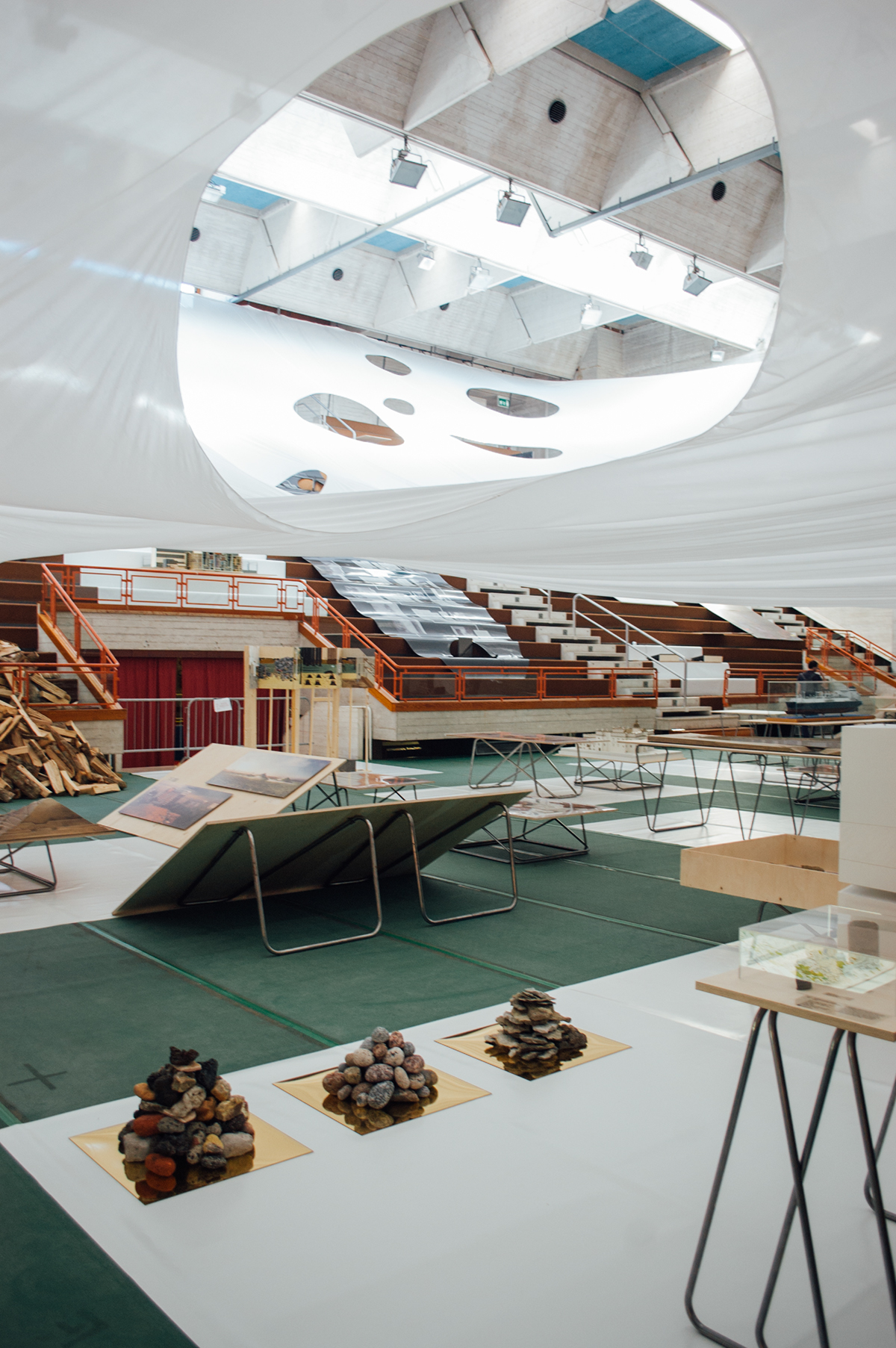
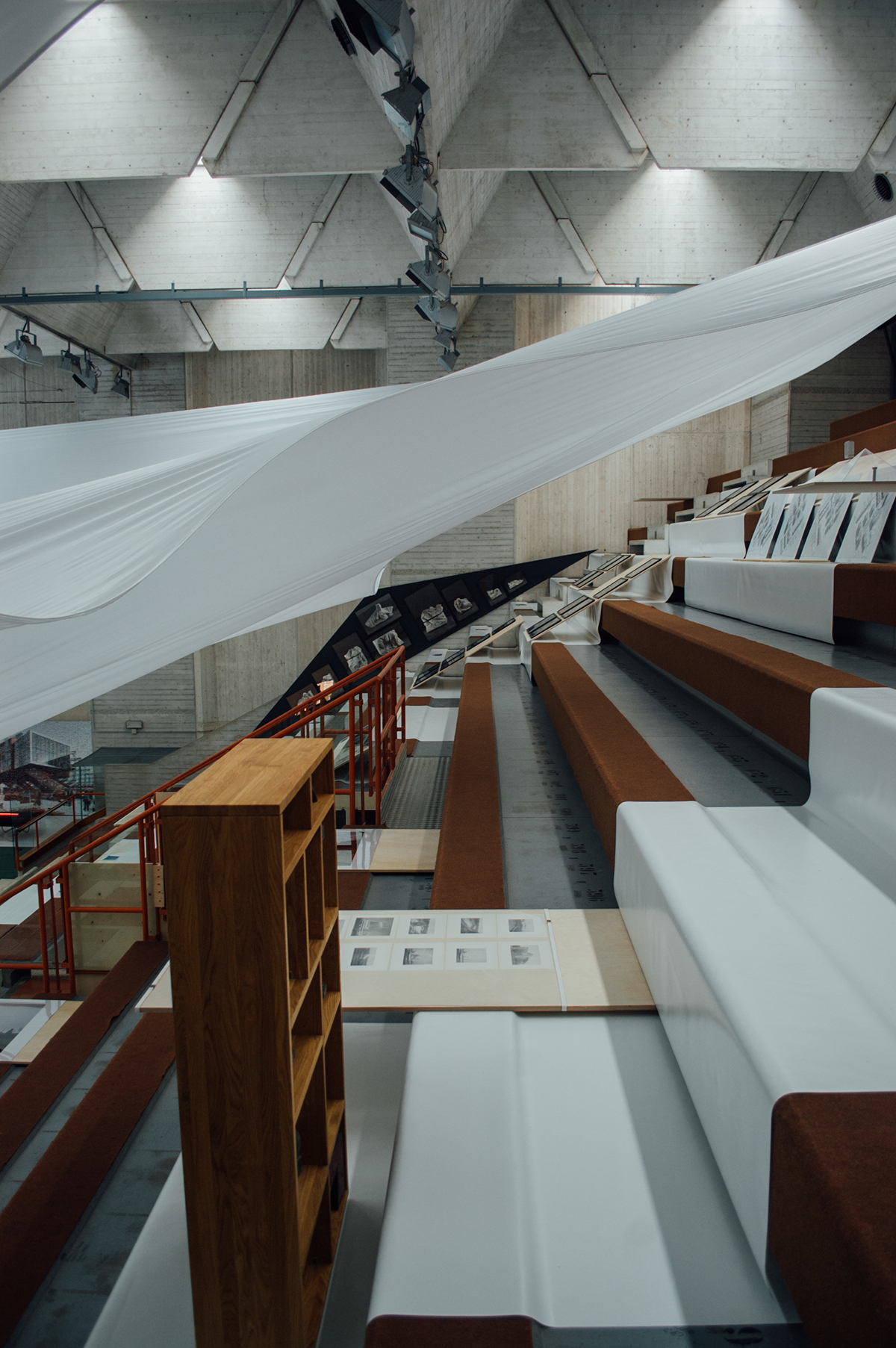
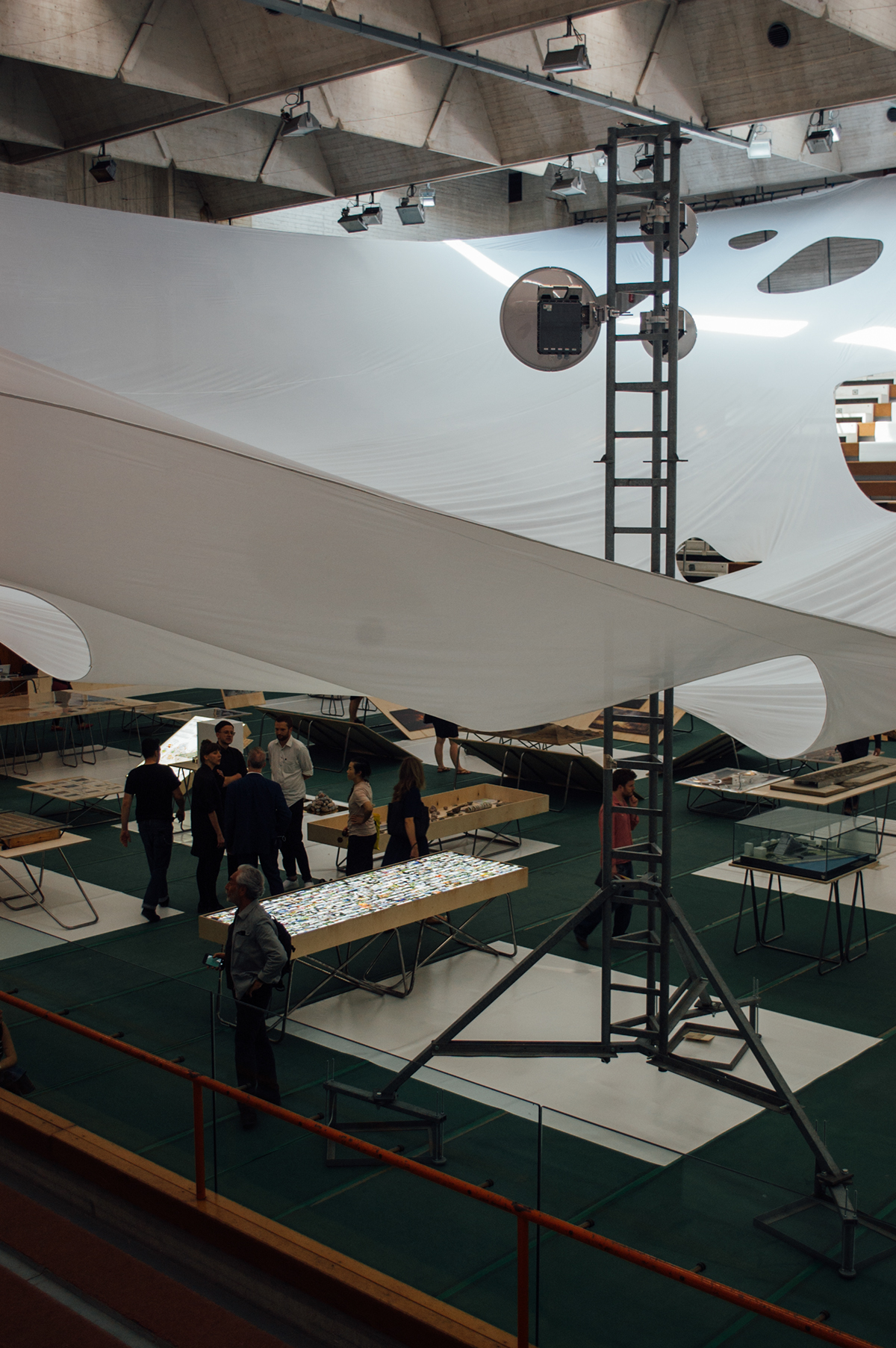
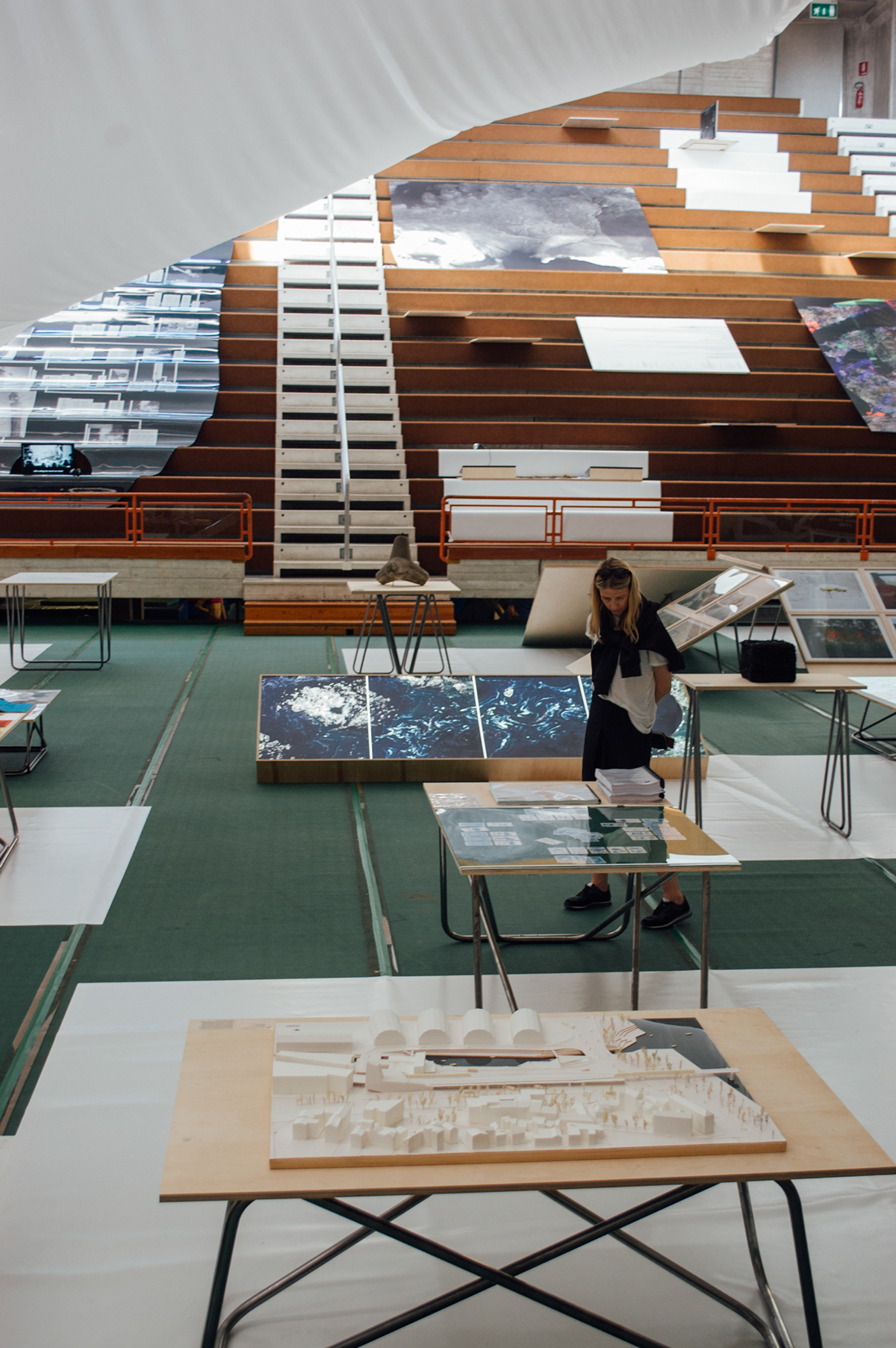
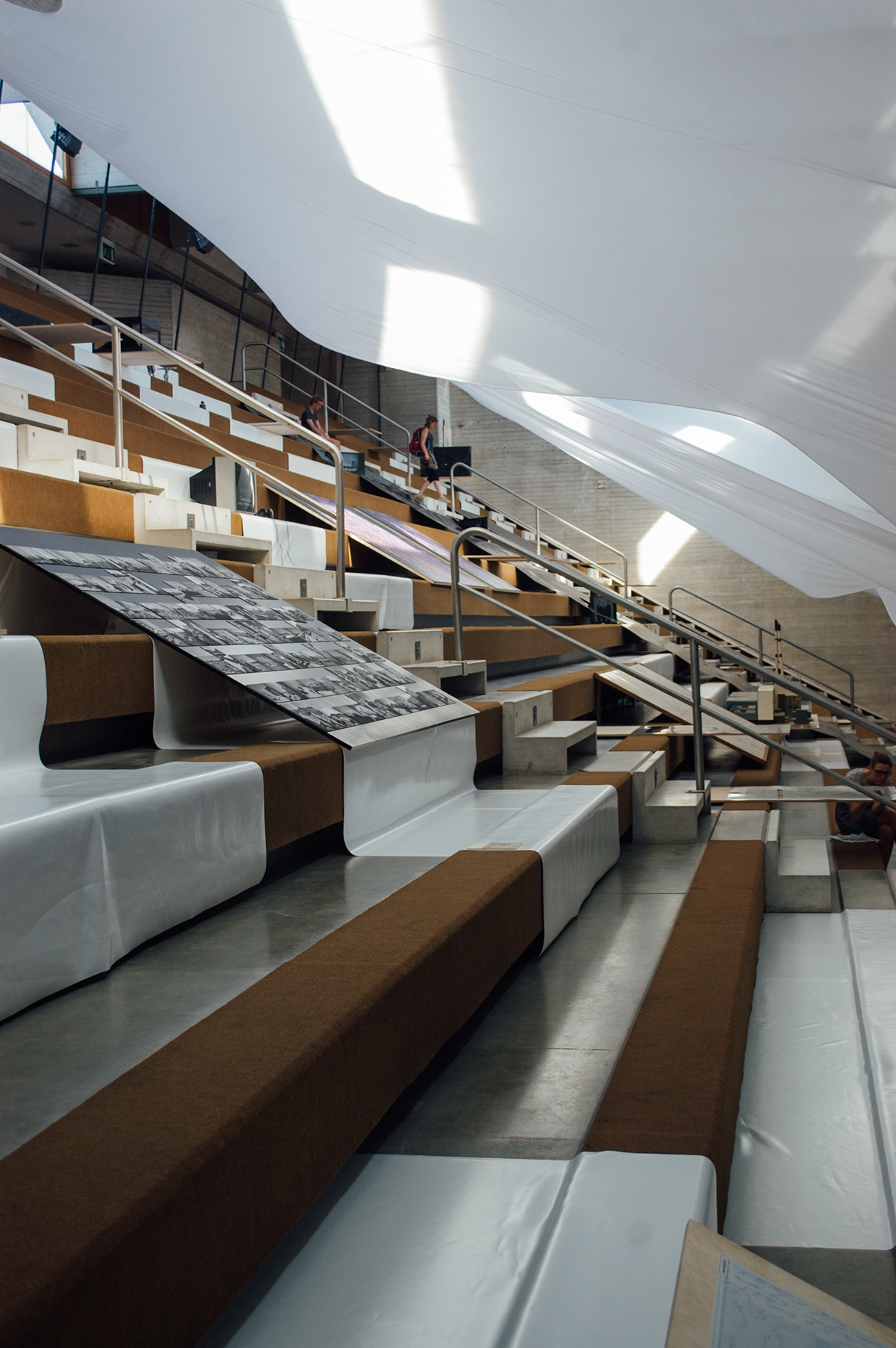
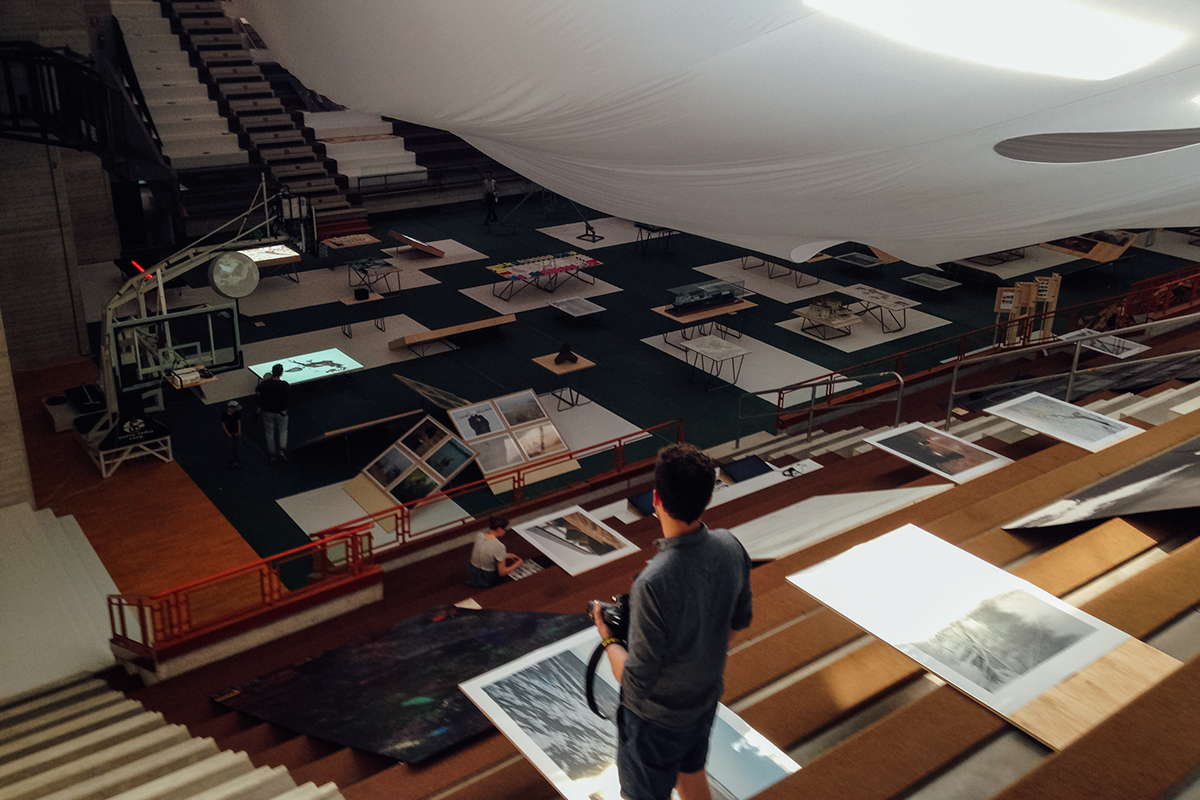
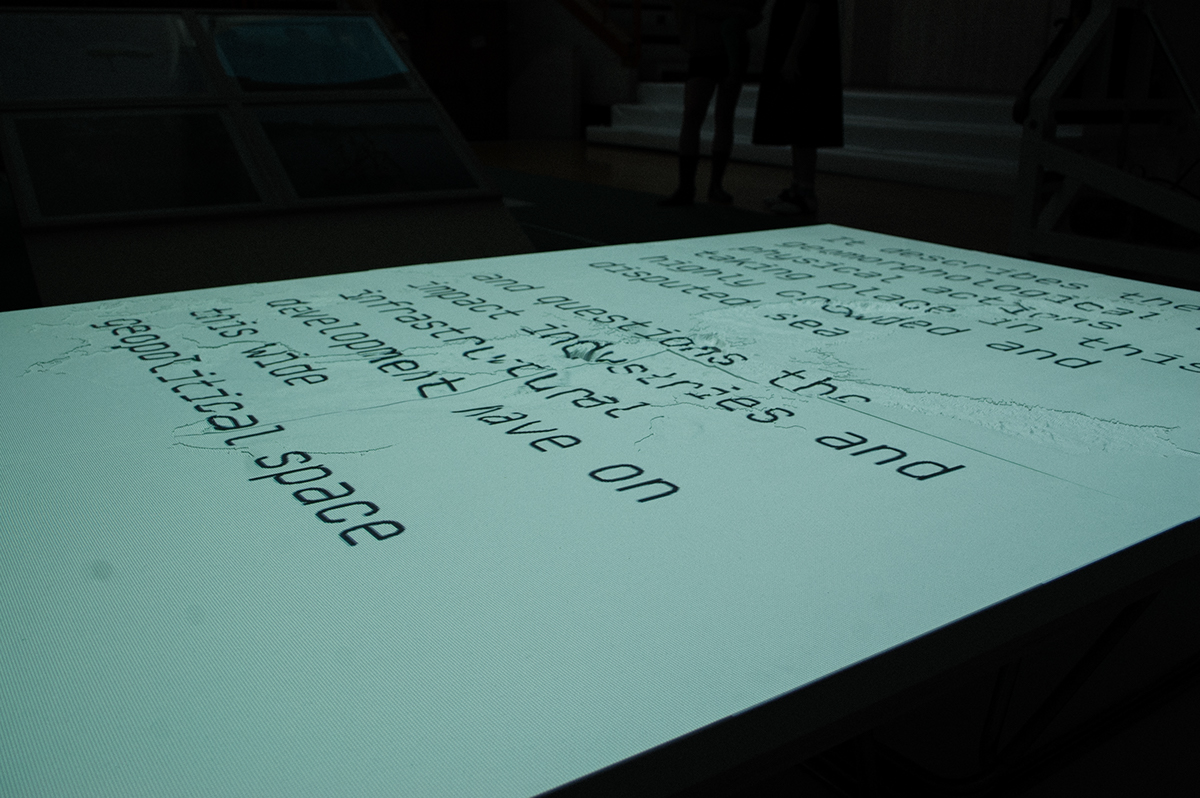
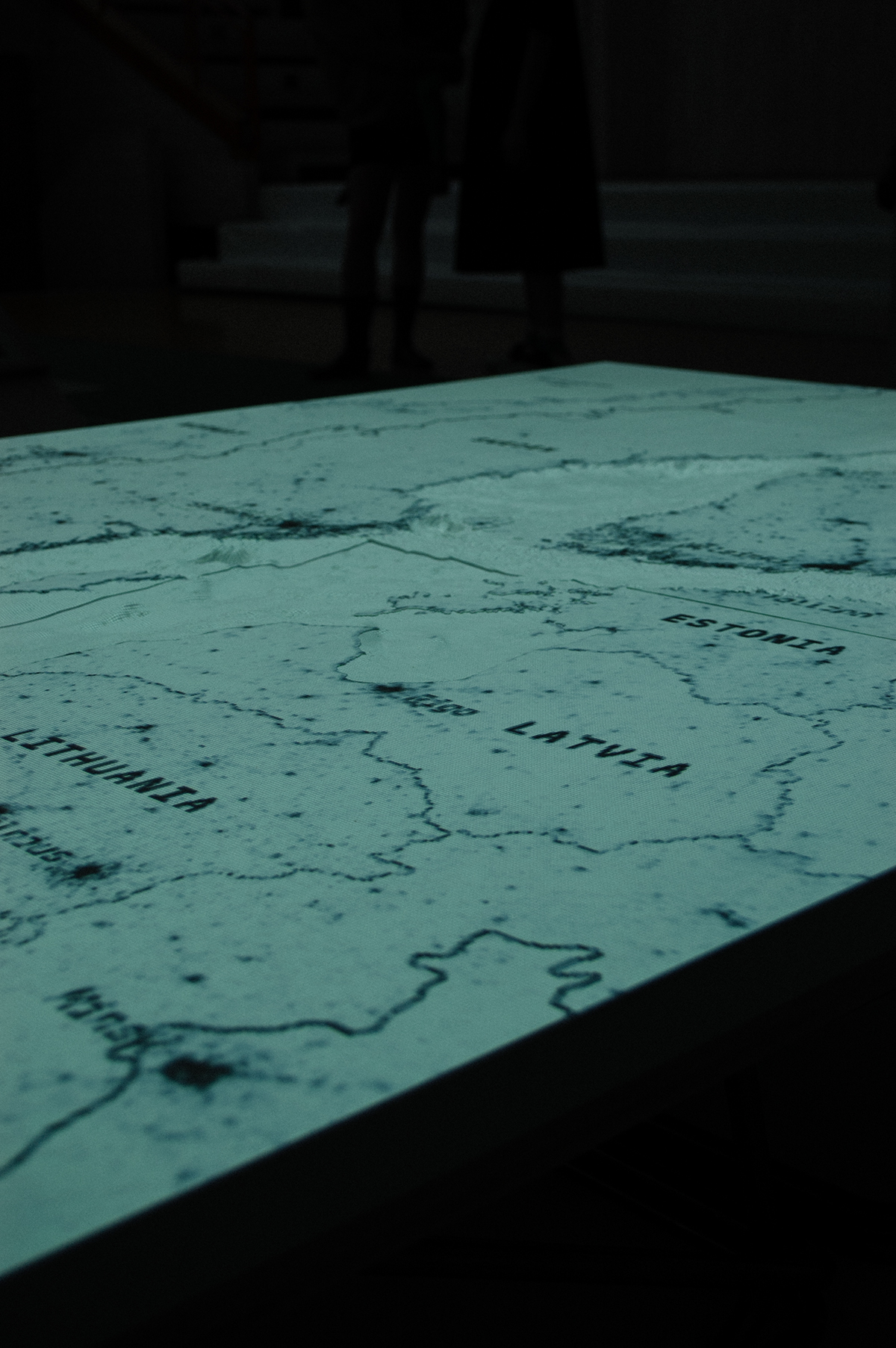
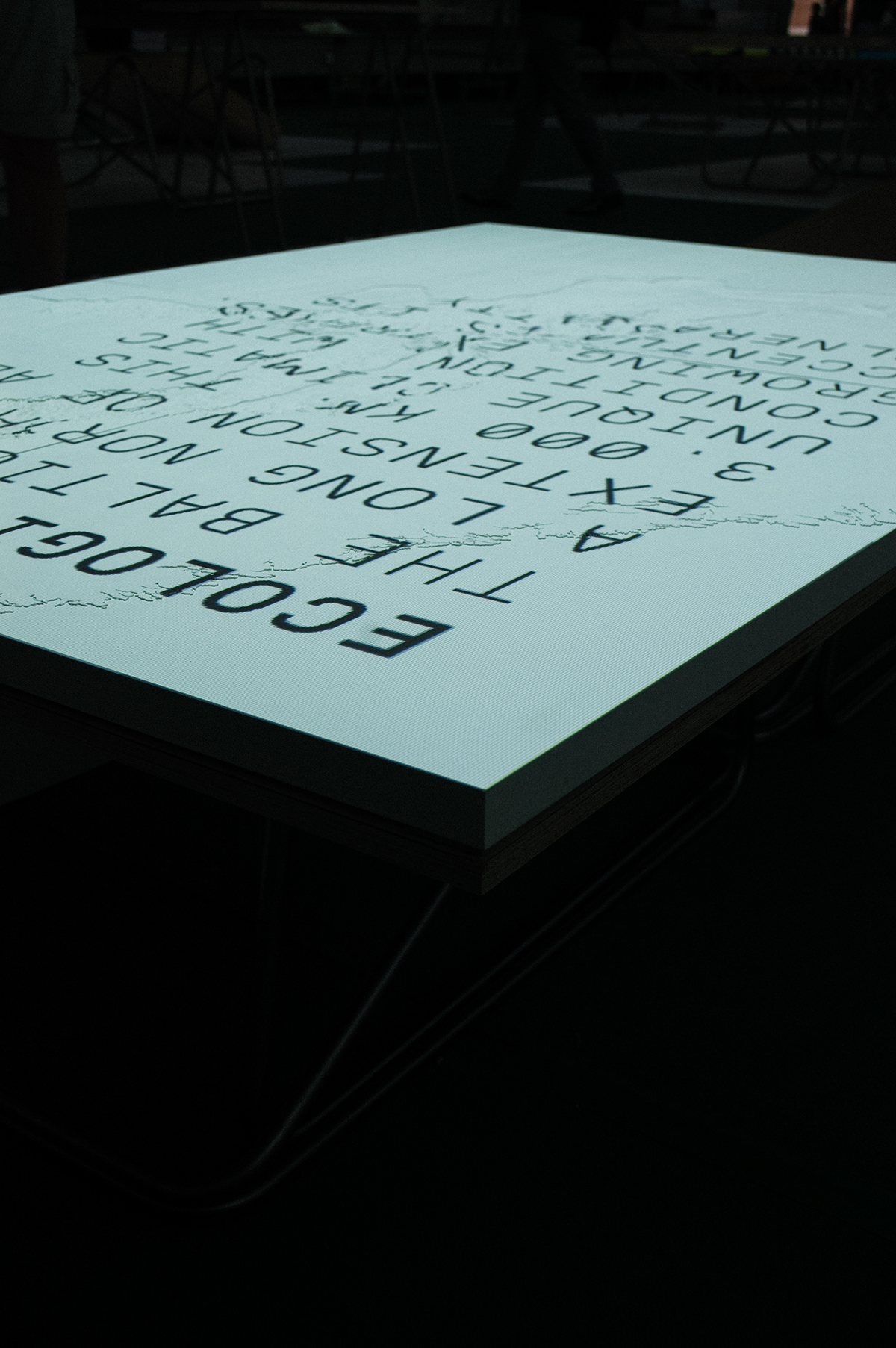
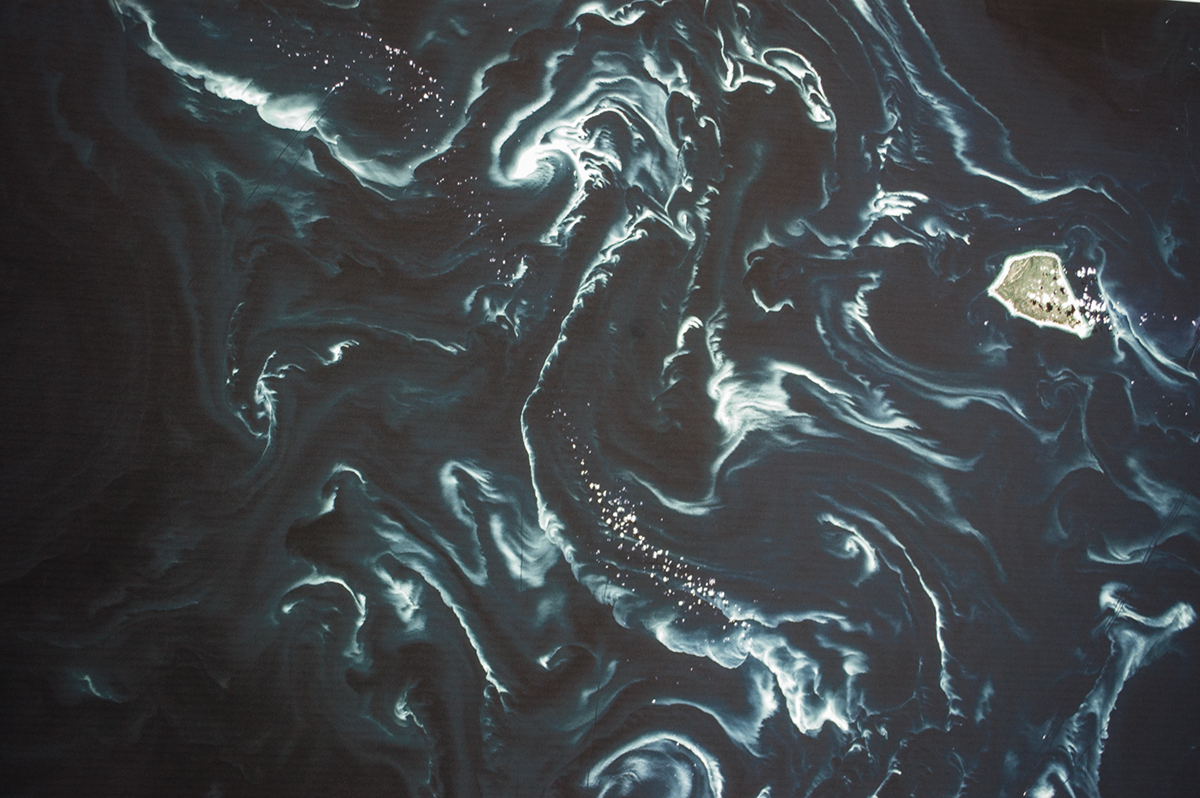
The horizon of artifacts cannot be observed in its entirety—a special installation interferes and obstructs its field of vision. A piece of lightweight, translucent, levitating 2000 square meter fabric restructures the hull of the Palasport to articulate relations between exhibits, visually fragmenting the space. The fabric plateau has special openings, creating a range of layered cavities. It functions as an optical device, allowing visitors to see the Palasport itself in a way that serves to highlight the ethical dimension of its architectural form. This fabric installation does not interfere with the surfaces or structures of the building’s concrete interior, rather, it is suspended and locked at select points a couple of meters above the ground, and is designed so that it can be lifted to accommodate a girls gymnastics competition in June, as well as other activities run by local Venetians during the summer months.
Link to the Baltic Pavilion


